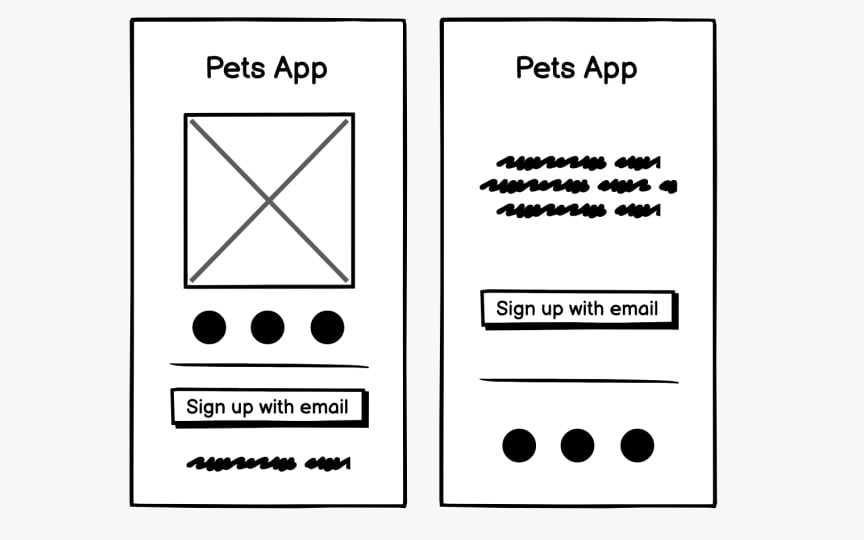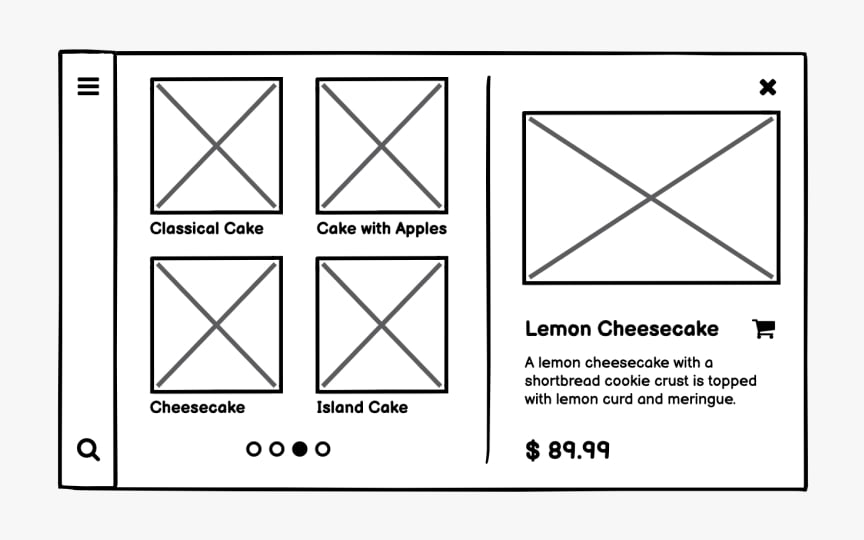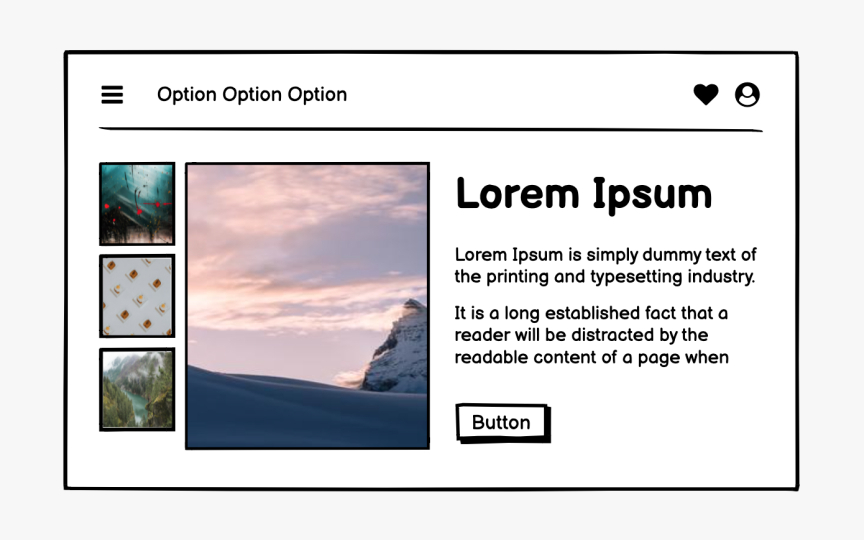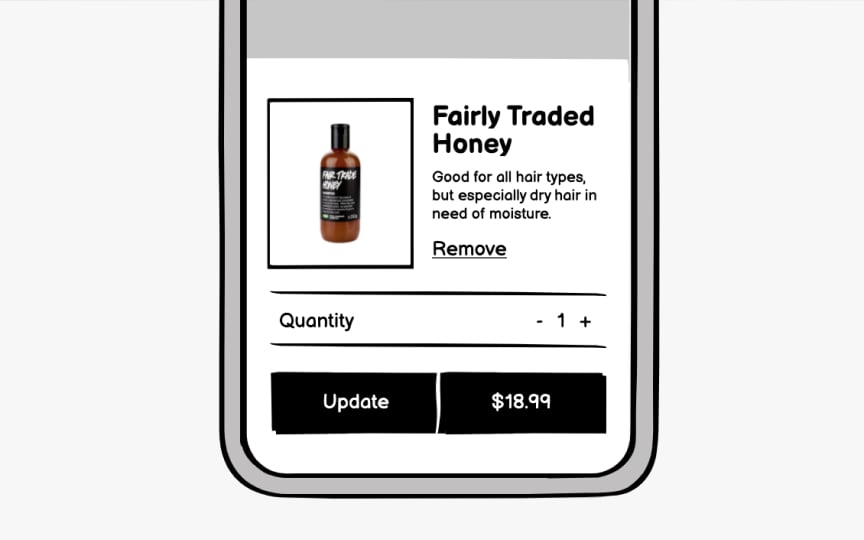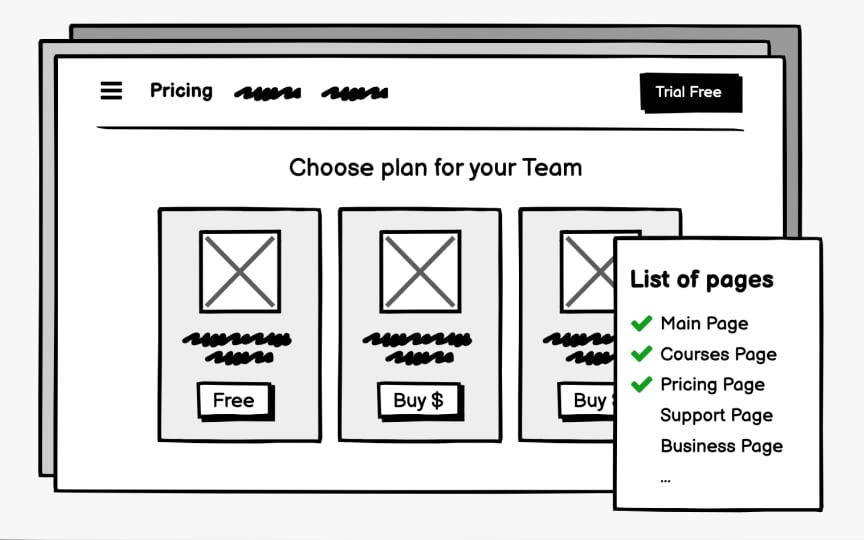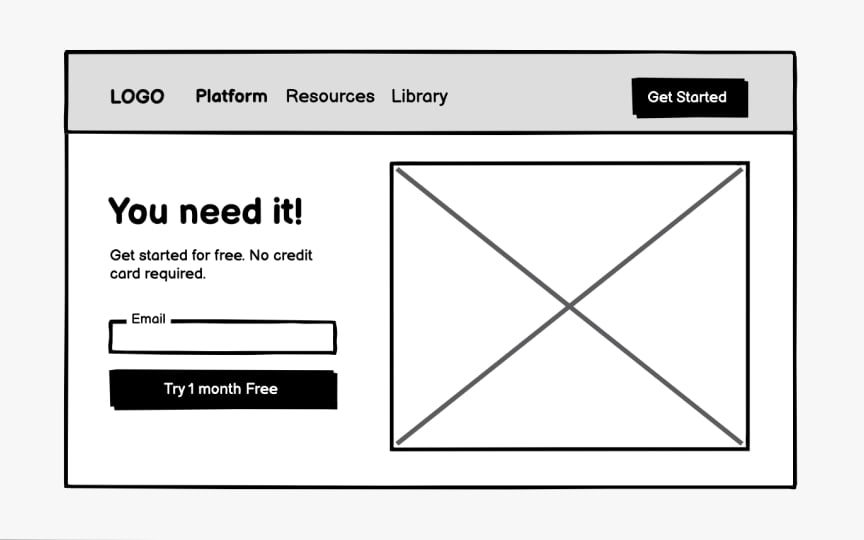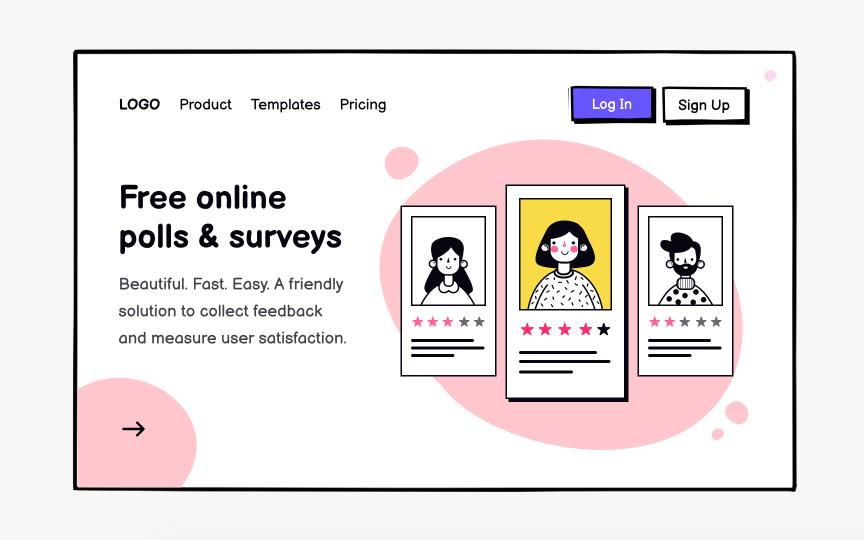Wireframe Fidelity
Understand how to effectively balance simplicity and detail to create wireframes that align with project goals
Wireframing is most effective at the beginning of the design process, when the main goal is creating the product's structure. Think of wireframes as blueprints that you need to have before starting the building construction. Wireframes allow you to quickly plan and validate the functional value of a page or screen. Doing that before putting great effort into creating the design will save you time and money.
Wireframes exist along a spectrum, ranging from low to high levels of fidelity. Fidelity in design context refers to the level of details and functionality. Low-fidelity wireframes are very simple and can even be hand-drawn. On the other end of the spectrum are high-fidelity wireframes that almost look like the finished product.
Each kind of wireframe can be helpful to different software design and development teams. The type you use depends on the needs of a given project and your progress in the design process.
Low-fidelity
Think of low-fidelity wireframes as your rough draft — it's not the final product but rather a place to start. Their purpose is to help shape the product in the early stages of development and ensure usability before further design and development take place. Low-fidelity wireframes don't take much work, but they'll spare a lot of extra effort down the road.
Medium-fidelity
High-fidelity wireframes reveal how the product will look at project completion. This type of
The look of high-fidelity wireframes is similar to prototypes, but don't be confused. Wireframes and prototypes are used at different stages of the
Dummy content refers to
On one hand, using Lorem ipsum speeds up the
Balsamiq recommends[1] using the actual copy that will appear in the final design early in the
When should you use low-fidelity wireframes? This type of
Using low-fidelity wireframes is a good idea if:
- You're at the very beginning of the design process. Start with low-fidelity wireframes as your first draft and add more details in subsequent iterations.
- You have a lot of wireframes to create. If you're working on a big project, it might make sense to start with low-fidelity wireframes for most
pages and then add only to wireframes that need more clarity. - You need to complete a project quickly. The fewer details wireframes have, the faster they are to make.
Using simple but detailed medium-fidelity
- You're putting together a wireframe map — a visual sitemap with wireframes for each page.[2] In cases like this, low-fidelity wireframes aren't detailed enough to follow, especially if you want to gather user feedback.
- It's the next step in a comprehensive design process. If your project has the time and budget, medium-fidelity wireframes are the next iteration after low-fidelity wireframes are established. Adding a bit more detail to your wireframes may help with fleshing out your design ideas.
Often, high-fidelity
When should you use high-fidelity wireframes?
- At the end of the design process, when you've already established how the design needs to look, and the functionality comes to the forefront of the design conversation.
- When you need to test complex user interactions. More detail allows for more accurate judgment of the
UI elements. - If you have the time and budget. High-fidelity wireframes consume a lot of design time and are more expensive to produce.
- You're working with a partner you want to impress. High-fidelity wireframes give this third party a better visualization of the final product and speaks of your professionalism.
- You're working on a personal project. When you are in charge of your own deadlines, you can decide how much time and effort you're willing to put in. High-fidelity wireframes are great for explaining your product's potential to investors.
References
Top contributors
Topics
From Course
Share
Similar lessons

Intro to Wireframing

How to Use Text in Wireframes

